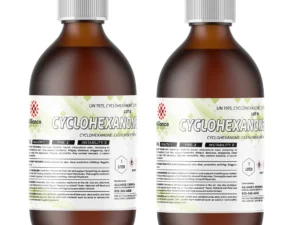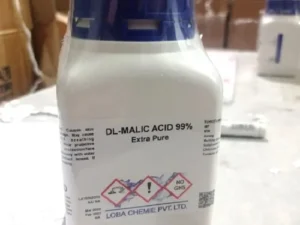Description
Tetrachloroethylene (Perchloroethylene): A Deep Dive into Uses, Risks, and Regulations
Tetrachloroethylene, more commonly known as perchloroethylene (perc), is a manufactured chemical widely used in various industries, most notably in dry cleaning. This colorless, volatile liquid has a characteristic ether-like odor and is valued for its excellent solvent properties. However, its widespread use has raised concerns about its potential impact on human health and the environment, leading to stringent regulations and ongoing research.
What is Perchloroethylene?
Perc is a chlorocarbon, meaning its molecular structure includes chlorine and carbon atoms (C2Cl4). It’s non-flammable, relatively stable, and dissolves many organic materials, making it ideal for cleaning and degreasing.
Principal Uses:
Perc’s versatility has led to its application in a wide range of industries:
- Dry Cleaning: This remains the largest application of perc. It effectively removes stains from clothes without damaging delicate fabrics.
- Metal Degreasing: Its solvent properties make it suitable for removing grease and oil from metal parts during manufacturing processes.
- Textile Processing: Used in finishing fabrics, removing oils, and improving the quality of textiles.
- Chemical Intermediate: Perc can be used as a building block in the production of other chemical compounds.
Potential Health Risks:
Exposure to perchloroethylene, particularly through inhalation or skin contact, can pose several health risks. The severity of these risks depends on the level and duration of exposure.
- Acute Effects: Short-term exposure can cause dizziness, headaches, nausea, and skin irritation. High concentrations can depress the central nervous system, leading to unconsciousness or even death.
- Chronic Effects: Long-term exposure has been linked to liver and kidney damage, neurological effects (memory loss, cognitive impairment), and respiratory problems.
- Carcinogenicity: The International Agency for Research on Cancer (IARC) classifies perc as “probably carcinogenic to humans” (Group 2A), based on sufficient evidence of carcinogenicity in laboratory animals and limited evidence in humans. Studies have suggested a possible association between perc exposure and certain types of cancer, including leukemia, bladder cancer, and non-Hodgkin lymphoma.
Environmental Concerns:
Perc is a persistent organic pollutant (POP), meaning it can remain in the environment for extended periods.
- Groundwater Contamination: Improper handling and disposal of perc can lead to soil and groundwater contamination. This poses a significant threat to drinking water sources and aquatic ecosystems.
- Air Pollution: Volatile emissions from dry cleaning facilities and other industrial sources contribute to air pollution. Perc is also a precursor to ozone formation, a major component of smog.
- Bioaccumulation: Perc can accumulate in the tissues of living organisms, potentially magnifying its toxic effects as it moves up the food chain.
Regulations and Control Measures:
Due to its potential health and environmental hazards, the use of perchloroethylene is subject to stringent regulations in many countries. These regulations aim to minimize exposure and prevent environmental contamination.
- Occupational Safety and Health Administration (OSHA): Sets permissible exposure limits (PELs) for perc in the workplace to protect workers from inhalation hazards.
- Environmental Protection Agency (EPA): Regulates the disposal, storage, and use of perc under various environmental laws, including the Clean Air Act, Clean Water Act, and Resource Conservation and Recovery Act (RCRA). The EPA has also implemented programs to encourage the use of safer alternatives in dry cleaning.
- State and Local Regulations: Many states and local governments have implemented additional regulations to further control perc emissions and protect public health.
Alternatives to Perchloroethylene:
Growing awareness of the risks associated with perc has spurred the development and adoption of alternative cleaning technologies and solvents. Some popular alternatives include:
- Wet Cleaning: Uses water and specialized detergents to clean clothes. It is considered a more environmentally friendly option and is gaining popularity.
- Liquid Carbon Dioxide (CO2) Cleaning: Employs liquid CO2 as a solvent. This method is non-toxic, non-flammable, and effective for cleaning a wide range of fabrics.
- Hydrocarbon-Based Solvents: Offer a less hazardous alternative to perc, although they are still flammable and require careful handling.
- Siloxane-Based Solvents: These solvents have a better environmental profile than perc and traditional hydrocarbon solvents.
Conclusion:
Perchloroethylene has been a workhorse solvent in various industries, particularly dry cleaning, due to its effective cleaning properties. However, mounting evidence of its health and environmental risks has led to increased regulation and a push for safer alternatives. While perc may continue to be used in some applications, the trend is toward phasing it out in favor of methods that better protect human health and the environment. As research continues and alternative technologies mature, the future of cleaning and degreasing will likely be characterized by more sustainable and eco-friendly approaches.
















Reviews
There are no reviews yet.